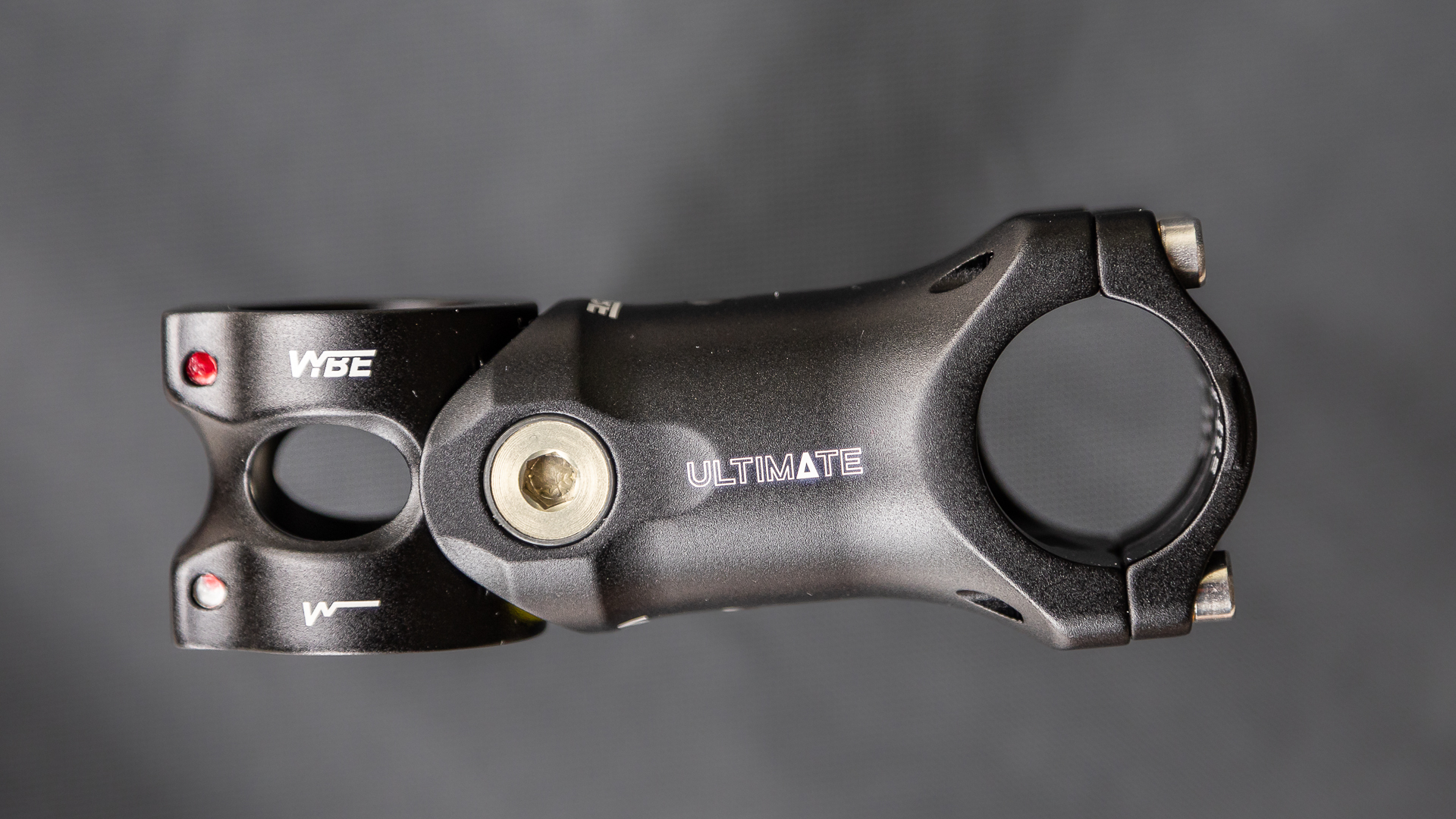
I have to admit, I’m a big fan of USE - I’ve used their lights for years and I like the build quality and (rarely needed) aftersales support. I am also a big fan of suspension stems on gravel bikes - I think they provide just the right amount of protection without adding too much weight or complication. So the Vybe suspension stem from USE should be right up my gravelly alley.
I am a long-time user of the Redshift ShockStop suspension stem on my Cannondale Topstone Carbon 3; I think a suspension stem works well with the Kingpin rear compliance and provides a very balanced ride. Its muting effect on trail chatter is one of those things that you don’t notice until you ride a bike without it and then the extra jarring is immediately apparent.
Construction
Like the Redshift, USE’s Vybe uses simple, interchangeable elastomers in the aluminium stem body to provide the boing but adds basic rebound and compression control, via 3mm Allen bolts top and bottom. These push plates onto the elastomers to squish them down and provide preload to tune the stem’s movement. They can also be used to alter the angle of the stem a little by loading one and releasing the other. This is important because currently, the Vybe stem is only available in two lengths (70mm and 90mm) and a positive rise option, so the elastomers are the only way to alter the stem angle. USE says that it shouldn’t be used upside down.

The rebound and compression adjustment is what sets the Vybe apart from its competitors, allowing much greater fine-tuning of the stem’s performance and greater rider customisation than is possible just by swapping elastomers. Potentially this is something that could be done on a ride-by-ride basis as well as per rider. It could be stiffened up for rough terrain and slackened off for easier rides with just a few twists on an Allen key so that the benefit of the stem was still accessible.
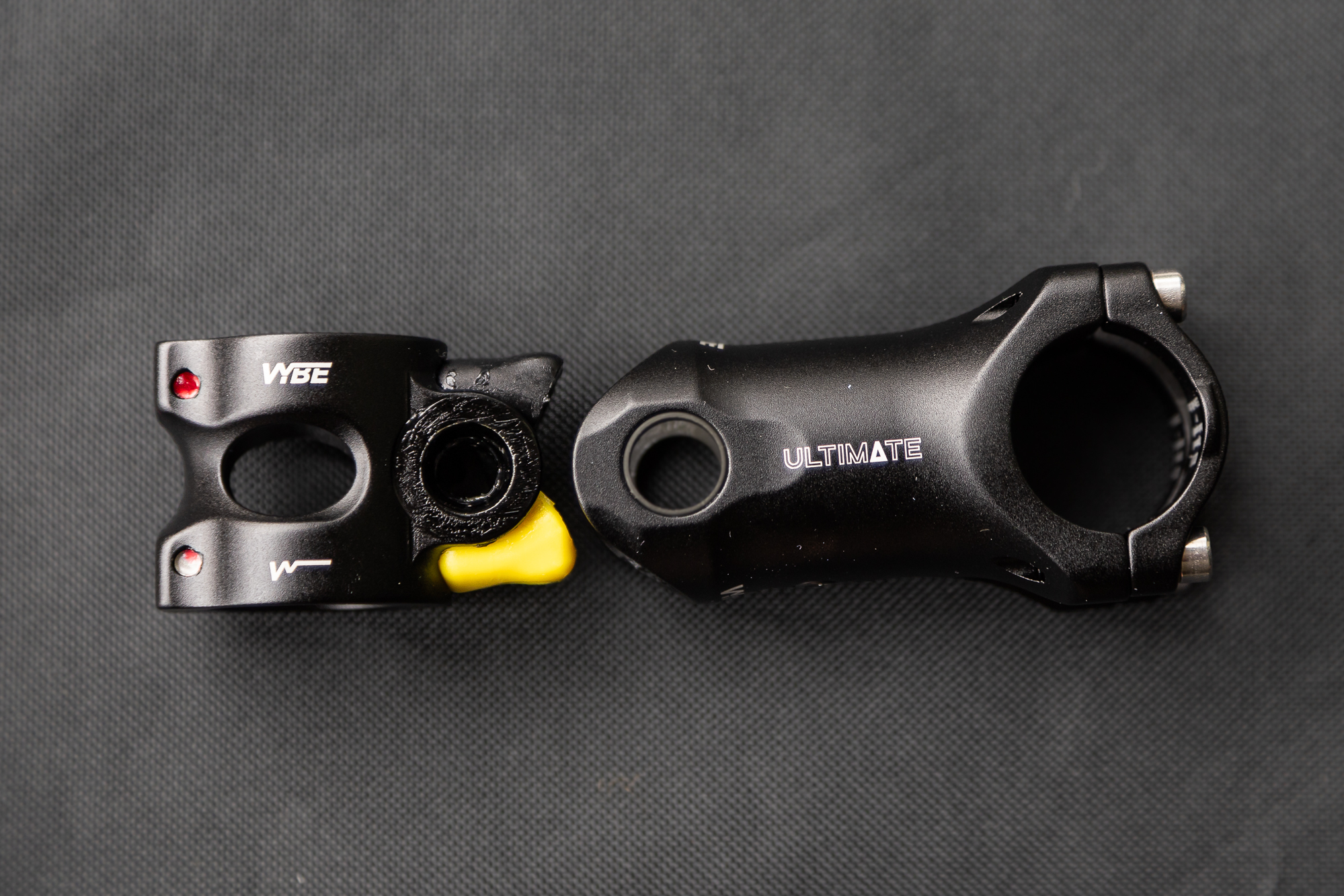
Aesthetically, the Vybe is pretty neat, less industrial-looking than the Redshift (and much less steam-punk than the eeSilk suspension stem) - if you squint a bit it could pass as a standard stem, apart from the silver pivot bolt. As such, I think I’d have preferred a black bolt to further disguise its talents. Weight is very good considering the construction; the 90mm stem came in at 206g compared to my 100mm Redshift at 280g and the SRP also undercuts the Redshift product by £10 and it’s lighter and cheaper than the eeSilk too.
The Ride
The box includes the stem, a choice of four elastomers and a little pot of appropriate grease to ensure it operates smoothly. The initial setup was simple enough - I followed the suggestion for the correct elastomer for my weight and the instructions for preload on the comprehensive instruction sheet. However, my very unscientific workshop bounce tests seemed to cause the stem to bottom out (when the suspension abruptly reaches the limit of its travel), so I wound on some more preload to stiffen things up and headed out the door for the nearest bit of gravel.
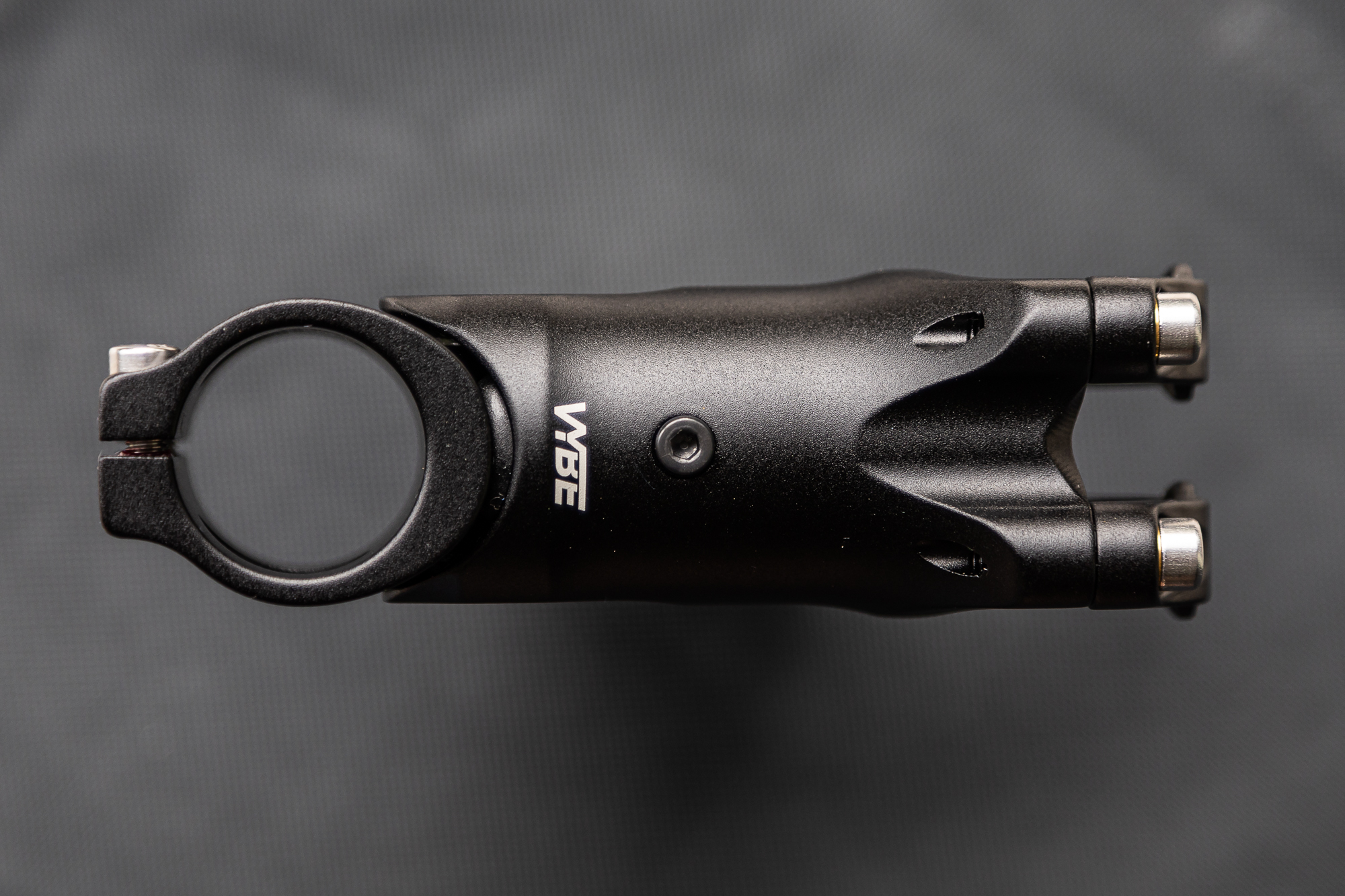
Two things became quickly apparent. Firstly, it was much more active and compliant than my Redshift, and secondly, I was still able to bottom it out occasionally when bunnyhopping a puddle or clumsily hitting a rock. The softer spring rate was very welcome though, allowing the stem to react more easily to smaller irregularities making for smooth progress over rougher trails, but still without ever feeling like I was being tipped forward over the bars. This was my (and is most people’s) main concern when suspension stem curious; would it feel like the front end was constantly collapsing or that I was going to slip forwards off the hoods? In truth, even when descending steep ground, I have never experienced that feeling. I think the angle change is just too small to detect amongst everything else that is going on when riding off-road.
It is worth also saying that there's no impact on lateral stiffness, with no detectable movement from the left or right sides when heaving on the bars uphill or honking out of the saddle. If blindfolded riding was possible, I think you'd be hard-pressed to tell that you had a suspension stem on in that respect.
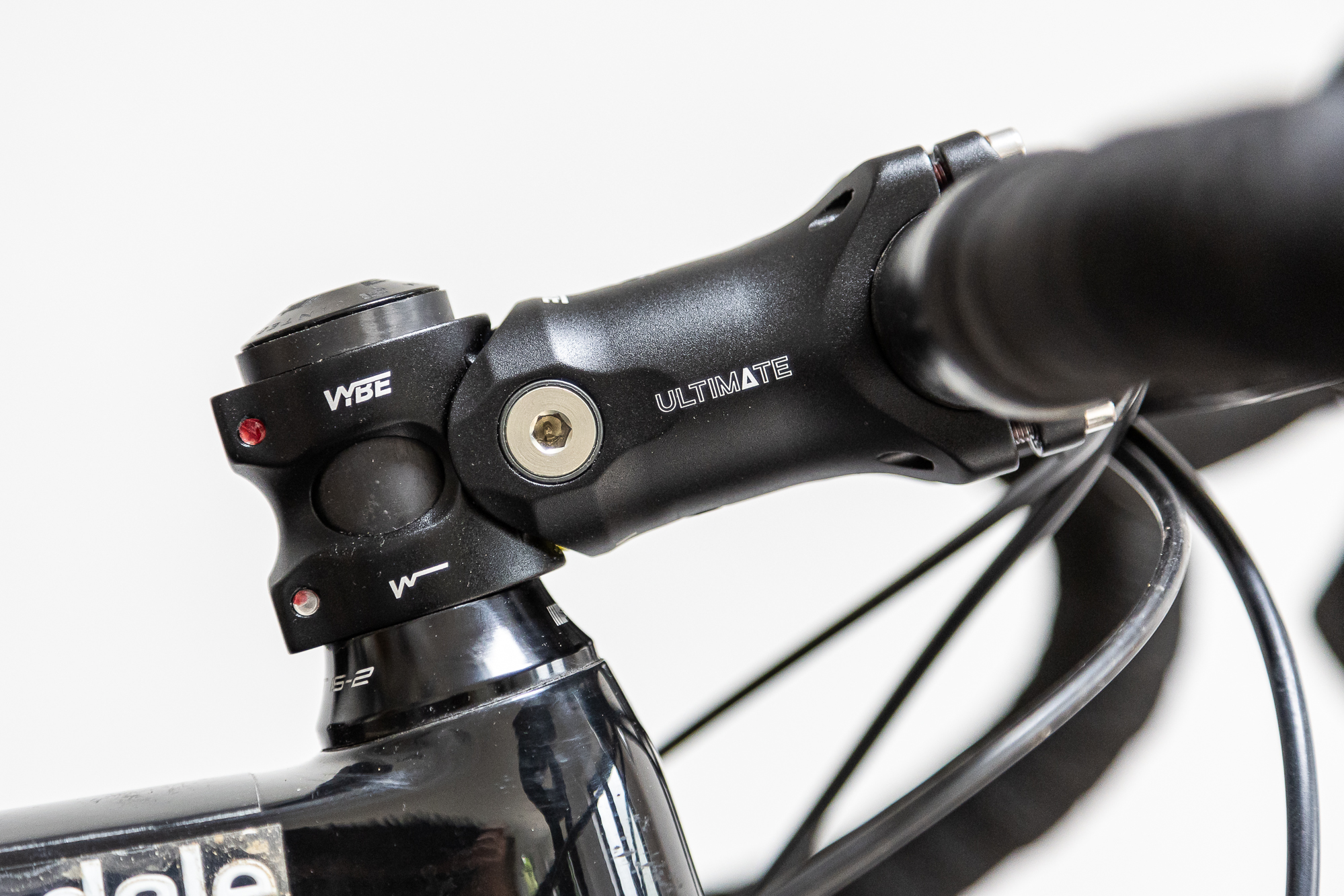
Next ride, I switched to the harder, purple elastomer with some preload, which was an easy 5 minute job, and this solved the bottoming-out issue for me when experiencing bigger hits whilst on the hoods. Although it stiffened the stem up a little, there was still plenty of compliance available to smooth out smaller bumps. However, at 73kg I am not particularly heavy, yet ended up with the stiffest elastomer fitted so bigger riders might struggle a bit.
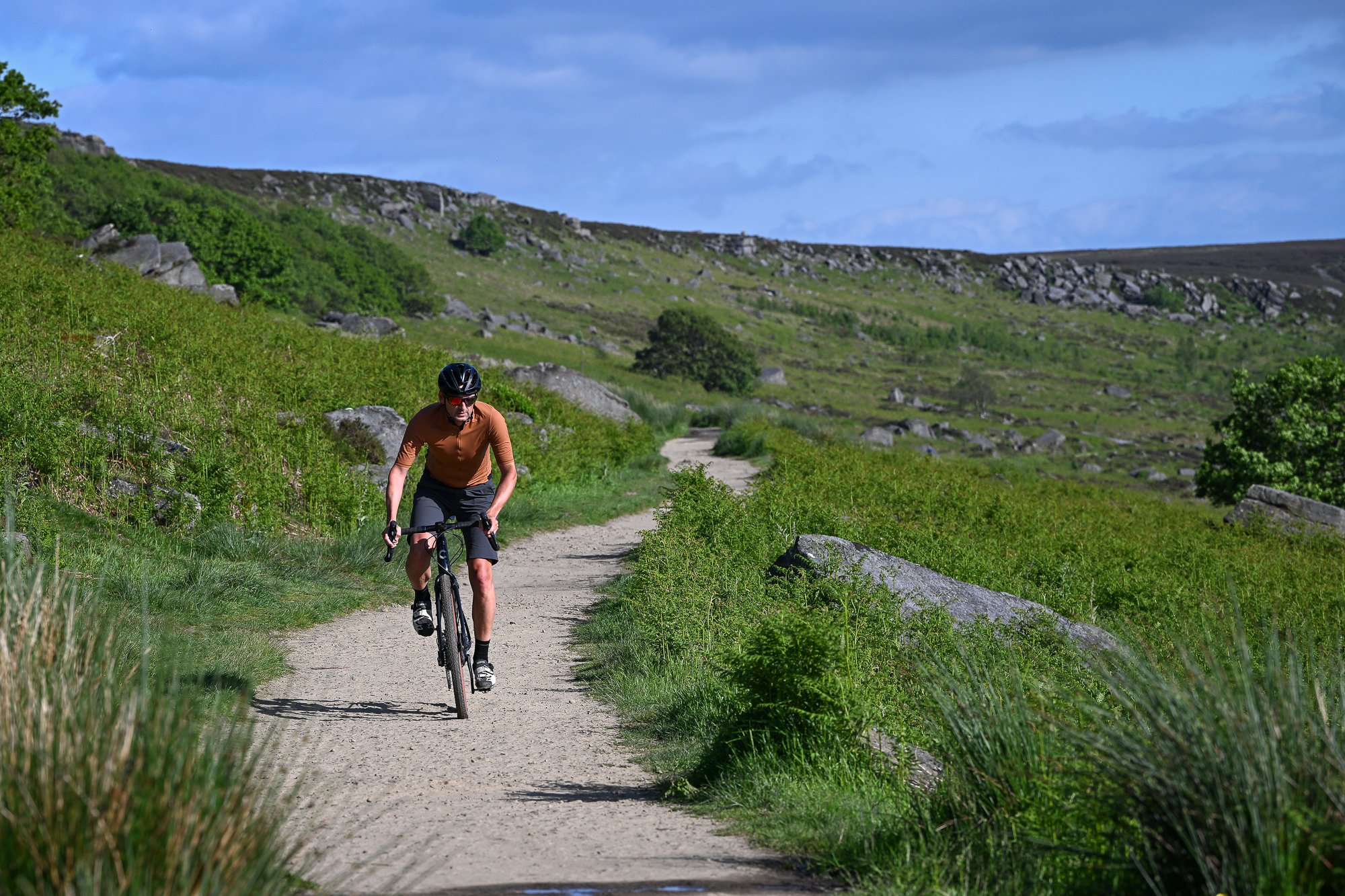
It is worth discussing here an inevitable issue which affects all suspension or flex stems on drop bar bikes, which is that the leverage changes significantly depending on hand position. Clearly, a longer stem has greater leverage so will require less weight to move it, but when you consider the very variable distance to the hoods, drops or handlebar tops from the pivot point near the steerer, it is easy to see a potential problem; riding on the hoods exerts about twice as much leverage as when on the tops, so the correct elastomer or spring rate for one hand position cannot also be correct for another. As I ride mainly on the hoods when off-road I tried to set the stem up for that, but if you chiefly ride on the tops or the drops then your set-up will be different and will require the softer elastomers. When on the tops, there was very little movement from the stem for me.
Value and conclusion
I liked the look, weight and suppleness of the USE Vybe a lot. If they made a longer, lower version I would switch my Redshift ShockStop for one but as yet, they don’t so I can’t. The more active, softer nature of the stem suits gravel riding well and it does a good job of isolating the rider from trail vibrations as well as bigger hits. The price is very competitive, especially given that the weight is considerably lower than the alternatives, whilst I have every confidence in USE’s quality as a manufacturer.
The only downsides are the limited size options currently available and the potential for even the firmer elastomers to be too soft for some riders. On the flip side, for smaller riders or smoother trails, the stem will still be active enough to be of value.
Arguably, a suspension stem does a similar job to a big tyre, (although a large volume tyre suspends the bike as well as the rider). However, the advantage of moving the suspension to the stem is that it gives you more options and control. You could run a small volume tyre for mainly smooth trails and still benefit from extra compliance, or you could use higher pressures when loaded down for bikepacking and retain some vibration damping. You could fit a stem like this and large tyres and luxuriate your way serenely down any gravel trail.







